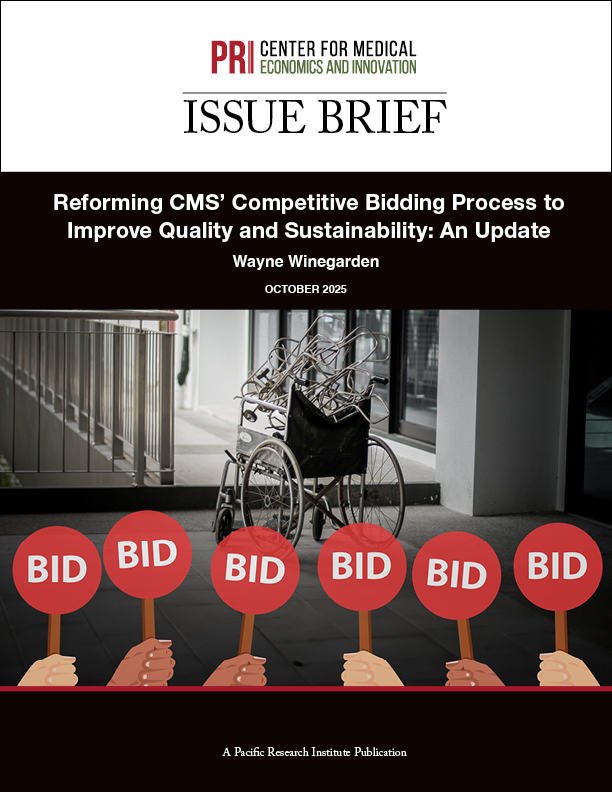SACRAMENTO – Proposed reforms to fix the problems with the current Medicare bidding process for acquiring prosthetics, CPAP machines, wheelchairs and other durable medical equipment don’t go far enough to fix the fundamental flaws in the process, finds a new brief released today by the Center for Medical Economics and Innovation at the nonpartisan, California-based, free market think tank, the Pacific Research Institute.
Click here to download the brief
“Medicare’s current broken bidding process drives up taxpayer costs, promotes the use of lower-quality equipment that doesn’t serve patients well, and results in shortages of wheelchairs, CPAP machines and prosthetics,” said Dr. Wayne Winegarden, Center director and the brief’s author.
Reforms to the Medicare competitive bidding process that began in 2011 set the compensation for all selected bidders based on the median of all winning bids. However, suppliers have no contractual obligation to provide the equipment and supplies at that price.
A PRI-produced animated video released from 2018 (click here to watch) illustrates the problem. A contestant on the game show “What Will You Bid?” bidding $400 per wheelchair is selected out of three contestants, but must make a losing choice – provide the service at the median bid and lose money or walk away. Unfortunately, many durable medical equipment providers are walking away, triggering supply shortages.
The broken bidding process is also biased toward awarding contracts that deliver lower cost, lower quality medical equipment that can worsen health outcomes for patients. Using the median bid also encourages gamesmanship of firms offering lowball bids to hurt their competition.
After the publication of PRI’s 2018 brief, the Centers for Medicare and Medicaid Services paused future rounds of bidding for durable medical equipment under the old, flawed bidding process as it worked to reform the process. However, its proposal – using the 75th percentile bid, where 25 percent of bidders will offer a price higher than what the federal government will pay – would still produce the same problems as the current system.
“It’s long past time for the federal government to reform the process so providers are paid appropriate prices while being held accountable to produce the equipment as promised – and patients have access to high quality durable medical equipment,” said Winegarden.
The brief makes the case that if the goal is to improve patient outcomes while generating Medicare savings, a better bidding process would take a holistic approach, considering the additional health care costs that arise when patients use lower cost, lower quality equipment and experience poorer health outcomes.
A single-price bidding structure – the typical process the government uses to purchase supplies – would better compensate providers based on a price just high enough to ensure sufficient supplies are available.

